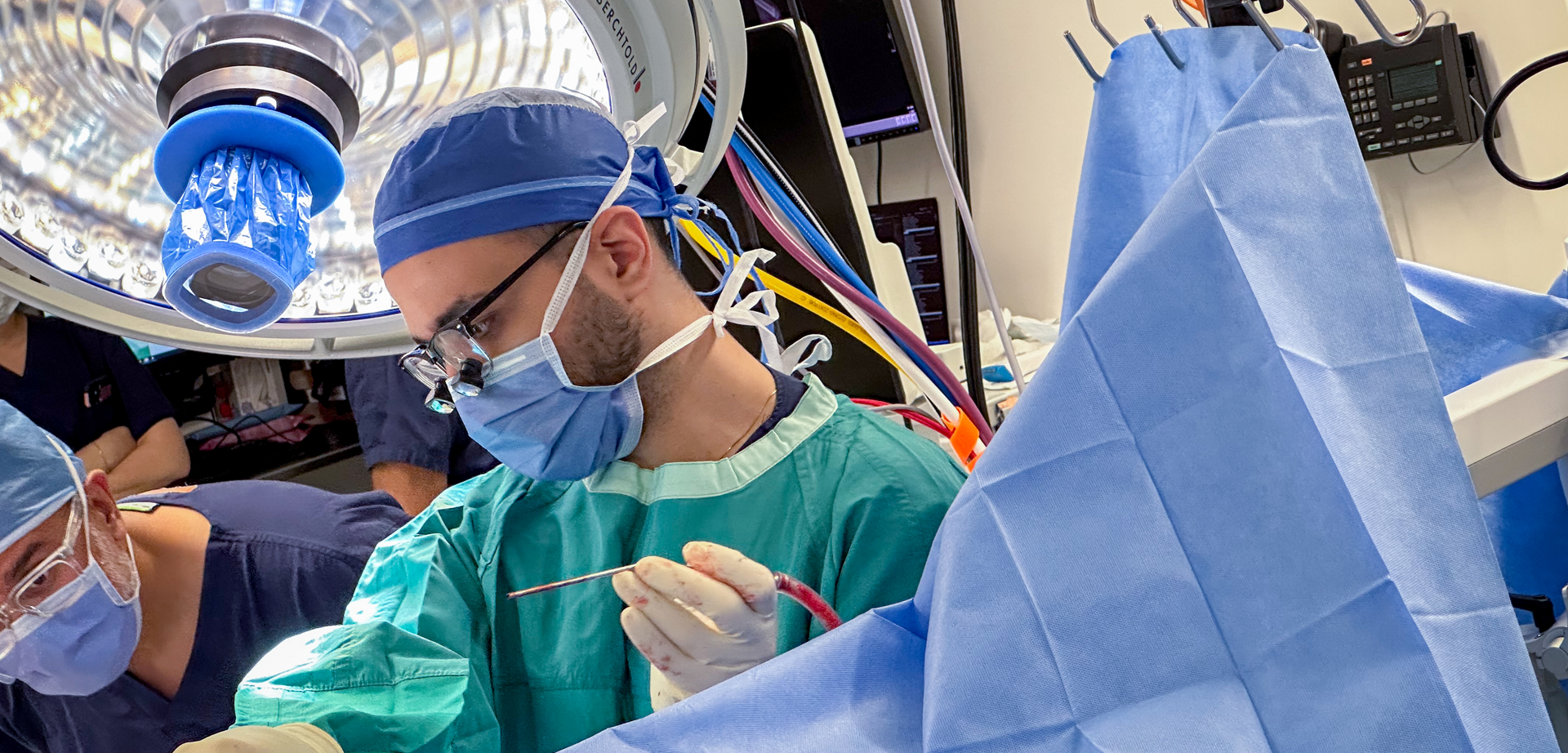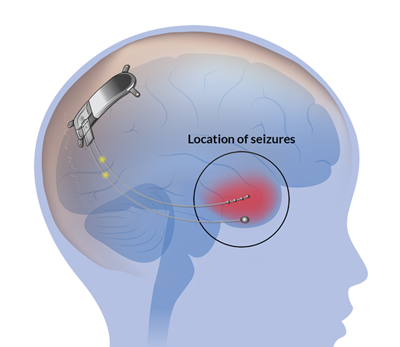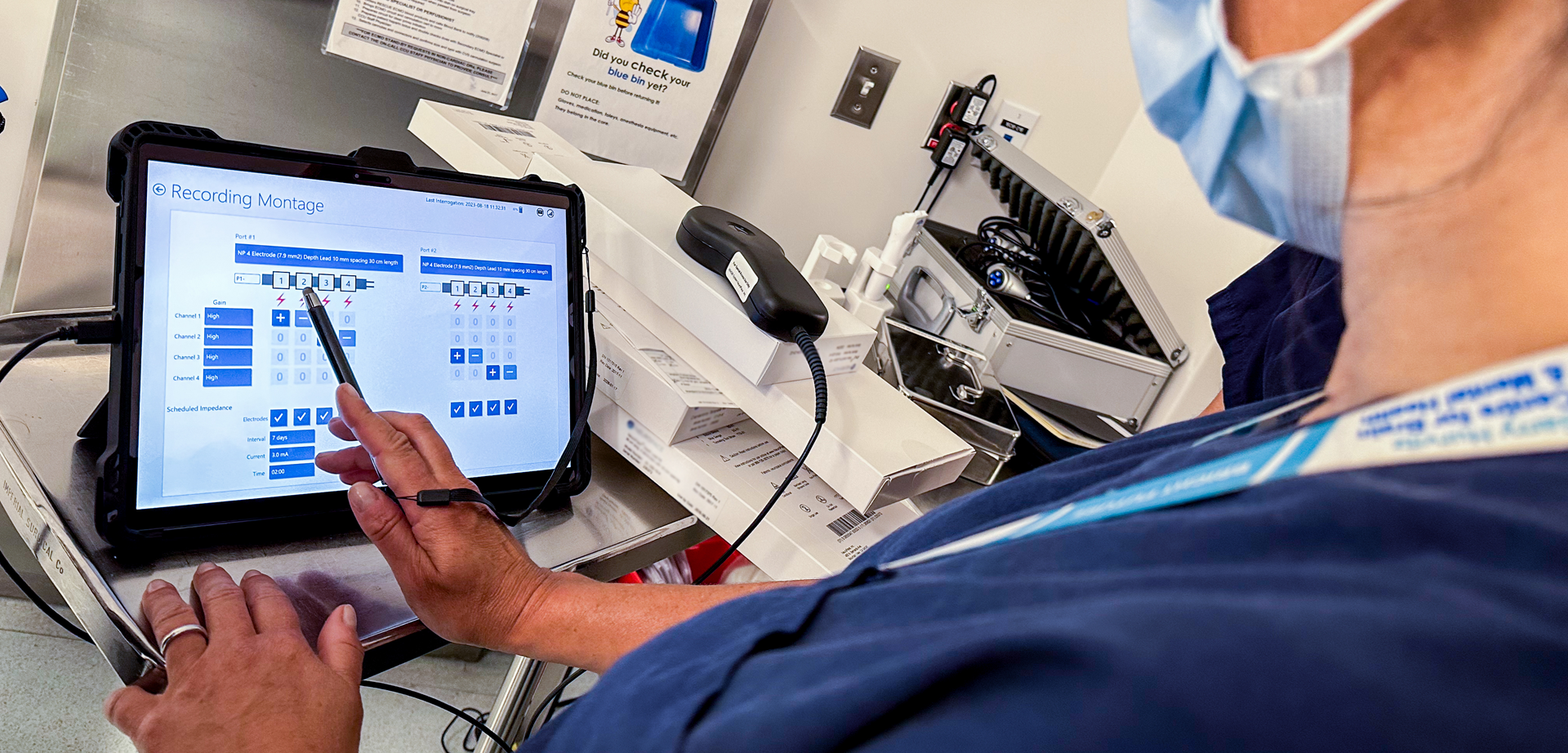SickKids implants the first Responsive Neurostimulation Device in Canada to treat drug-resistant epilepsy
Summary:
The interdisciplinary team from SickKids’ Comprehensive Epilepsy Program led the first implantation of an RNS device in a patient living with drug-resistant epilepsy.
For the first time in Canada, a team from The Hospital for Sick Children's (SickKids) Comprehensive Epilepsy Program (CEP), led by Drs. Elizabeth Donner and George Ibrahim, have successfully implanted a Responsive Neurostimulation (RNS) device in a teen living with drug-resistant epilepsy – a potentially revolutionary therapy for patients whose seizures have been resistant to all other treatments.
“For about 30 per cent of children with epilepsy, medication does not control their seizures and for that group of children, we aggressively search for other ways to treat their epilepsy including surgical interventions,” says Dr. Elizabeth Donner, Head of the Division of Neurology and Director of the Comprehensive Epilepsy Program at SickKids. “For some of these children, surgery to remove the part of the brain causing seizures ceases to be a viable option when the area overlaps with other important functions – like motor or language function.”

Dr. George Ibrahim implanting the Responsive Neurostimulation Device.

With RNS, two electrodes are implanted in the brain at the site where seizure activity is occurring. Acting in conversation with the brain, the electrodes monitor brain activity and deliver small bursts of stimulation to the area when unusual activity is detected. In this way, the device can right-set the electrical disturbances in the brain that cause seizures, intercepting a seizure before it occurs.
For the teen at SickKids, arriving at the milestone of his device implantation day was the result of a tremendous journey for him, his family and his clinical team, with the support of CEP Nurse Practitioner, Ivanna Yau. Patients like him, with drug-resistant epilepsy, undergo a series of evaluations to explore alternative interventions when medication isn’t a viable therapy. This includes investigations to determine whether the section of the brain causing the seizures can be removed without critical impact on quality of life. It can take months – sometimes years – to locate the area of the brain from which seizures arise. In his case, the area of his brain causing his seizures overlaps with the area that controls the movement of the arm and leg on one side of his body.
To find out that surgery isn’t a viable option after such a long journey can be incredibly disappointing – especially when other prior interventions to treat a patient’s epilepsy have been unsuccessful.
While RNS has been utilized as a therapeutic option to treat drug-resistant epilepsy throughout the United States, it has not yet been approved by Health Canada. Bringing RNS to Canada under Health Canada’s Special Access Program for this patient’s case, was the result of substantial advocacy led by Sara Breitbart, Nurse Practitioner in the Division of Neurosurgery and the broader CEP team.

Dr. Elizabeth Donner reviews the implanted electrodes, determining the best way to detect seizures in the patient.
After the successful implantation of the device, the patient is having regular follow-up appointments and monitoring with his CEP team. In time, the device is expected to reduce his seizures – impactful progress after his epilepsy had been resistant to all other treatments.
Determination, advocacy and persistence of this teen, his family and SickKids’ CEP team achieved this Canadian milestone in the treatment of drug-resistant epilepsy. Health Canada approval has yet to be provided for widespread use of RNS. “Reflecting back, I know of other children for whom this therapy could have been life changing, and I know the impact it could have going forward,” says Donner. “We will continue to advocate to bring this therapy to more children and youth with epilepsy.”

